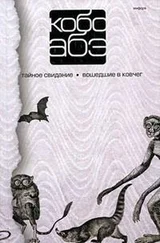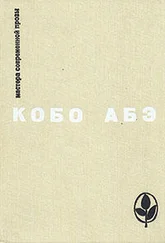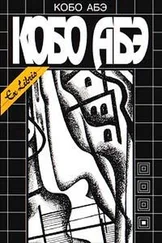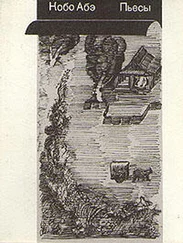Кобо Абэ - The Ark Sakura
Здесь есть возможность читать онлайн «Кобо Абэ - The Ark Sakura» весь текст электронной книги совершенно бесплатно (целиком полную версию без сокращений). В некоторых случаях можно слушать аудио, скачать через торрент в формате fb2 и присутствует краткое содержание. Год выпуска: 1988, Жанр: Современная проза, на английском языке. Описание произведения, (предисловие) а так же отзывы посетителей доступны на портале библиотеки ЛибКат.
- Название:The Ark Sakura
- Автор:
- Жанр:
- Год:1988
- ISBN:нет данных
- Рейтинг книги:3 / 5. Голосов: 1
-
Избранное:Добавить в избранное
- Отзывы:
-
Ваша оценка:
- 60
- 1
- 2
- 3
- 4
- 5
The Ark Sakura: краткое содержание, описание и аннотация
Предлагаем к чтению аннотацию, описание, краткое содержание или предисловие (зависит от того, что написал сам автор книги «The Ark Sakura»). Если вы не нашли необходимую информацию о книге — напишите в комментариях, мы постараемся отыскать её.
The Ark Sakura — читать онлайн бесплатно полную книгу (весь текст) целиком
Ниже представлен текст книги, разбитый по страницам. Система сохранения места последней прочитанной страницы, позволяет с удобством читать онлайн бесплатно книгу «The Ark Sakura», без необходимости каждый раз заново искать на чём Вы остановились. Поставьте закладку, и сможете в любой момент перейти на страницу, на которой закончили чтение.
Интервал:
Закладка:
“Why the jeep?” he asked. “Do you get around much?”
“Did once. I used to be a photographer’s assistant.”
“Used to be?”
“Yup. Sometimes I think I’ll take a shot of something, and I get my camera all set up, and then before I know it I lose interest in the whole idea. I guess I’m just lazy.”
“So am I. The human being is basically a very lazy animal, you know. That’s how we evolved from monkeys: by using our brains to get out of doing things. But photography’s a good line of work, it seems to me.”
“Not as good as it seems. Besides, I was only an assistant.”
“Still, it’s nothing to be ashamed of. You wouldn’t have to worry if a policeman stopped you on the street and started asking questions.”
We passed the tollbooth. Suddenly the scenery took on a transparent clarity. Traffic still wasn’t moving much, but since we were on an elevation, at least there was a breeze. I thought with renewed gratitude of my life in the quarry, where the air was naturally cool and there was no need to worry about asthma or allergies, as with artificial air-cooling systems. I couldn’t wait to get back to my ship.
Just to set the record straight, I’m not a stay-at-home by nature. As a matter of fact, I’m very fond of travel — but not in a jeep: I roam all over Japan while squatting on the toilet. The eupcaccia dines as he evacuates, the insect dealer does a little light reading or looking around, I travel.
My favorites are the color aerial photographs from the National Land Board: detailed photographs taken with a special Swiss camera, each one ten inches square. Depending on the area covered, they range in scale from 8000:1 to 15,000:1. Yet each has unbelievable resolving power, so great that with a magnifying glass you can make out not only individual houses but cars and people as well. Fields are distinguishable from rice paddies. You can even tell more or less how the streets are paved.
It’s still more interesting when you look at such photos through a special device called a stereoscope. Since aerial photographs are taken at fixed intervals — one every ten seconds from a survey plane — approximately three-fourths of the geographical features in successive photographs are redundant. By aligning two photographs in sequence, therefore, and taking advantage of the resulting parallax, you can make the scene stand out in three dimensions.
The stereoscope consists of a rectangular metal plate fitted with two adjacent convex lenses, and a hollow for the nose like that on a fancy-dress mask; it has a six-inch support at either end. First you locate the same point on both photographs, then you arrange them side by side so that the two points are directly across from each other. The photos should be slightly closer together than the width of the lenses. The important thing is to maintain a fixed bearing. Then place the stereoscope directly over the photos and peer through the lenses from a slight distance. Concentrate your gaze in the center, ignoring the periphery. There is no correction for visual problems, so if you’re shortsighted, keep your glasses on. Continue to focus intently, making fine adjustments in the distance between the photos as needed, and at some point you will hit on just the right arrangement: then magically the low-elevation places will drop away, and the high-elevation ones come thrusting up at you. It goes beyond perspective; you would swear you were looking not at a photograph but at an exact replica of the scene. The impression of depth is in fact intensified so that in an urban area, the high-rise buildings and TV towers seem to jump up and threaten to stab you; in a mountainous area it’s the crags and treetops on the peaks. In the beginning, I would always find myself ducking or closing my eyes.
It gets to be an obsession. An addiction. I spend about five hours a day roaming around the photo maps, stopping every half hour to cool my eyes with a damp towel and apply one or two kinds of eyedrops. Since the only thing that keeps me home is a desire to spare my knees, it is ideal for me to move about freely this way, using my eyeballs as wheels. Traveling with three-dimensional maps is like learning to walk on air.
You can cross the ocean in a flash, if you’ve a mind to, island-hopping till you reach the mainland, then perhaps going on to still other islands beyond. I prefer not to get greedy, but to stick patiently to one area, looking at everything until I have familiarized myself with it completely: old mazelike neighborhoods in hilly areas without a single straight road or right-angled intersection; hopeless tangles of winding streets through which not even the local shopkeepers can direct you. The reason residents themselves cannot draw an accurate map is that they see their surroundings from eye level only. I, however, am privileged to have the entire scene spread out before me at once. If there is a branch road that joins the main road ahead, I can divide myself in two and enjoy both at the same time. If I come to a dead end — say, a road blocked off by a cliff wall — I need only pull away from the stereoscope and view the photo as a flat surface again. With no fear of what others may think, I can walk anywhere I want and peer freely into any building. As long as you plan out an escape route beforehand, even fairly bold actions are safe, like cutting across lawns or marching straight through rooms.
And so I explore it all: sluices running the length of a stone staircase; a two-story building whose upper story is a lighter color, obviously a recent addition; a garden with pond, surrounded by tiled rooftops; a cottage buried in a thicket; a house with a vast flat roof, no garden; a farmhouse, under its eaves a glimpse of the hood of a fire engine, converted from a small pickup truck; a Shinto shrine with twenty-four storage drums lined up in the back; the storehouse of an agricultural cooperative, with a hole in the roof; a lumber mill jutting out into the river; a lone dwelling buried deep in the mountains, where it seems no sunlight could possibly penetrate at any hour of the day.
And connecting them all, roads that are not roads. Information accumulating in direct proportion to the passing of time. When I grow tired, it is pleasant to sit on a bench in the park overlooking the harbor, and drink in great drafts of sunshine. Strolling along a riverbank, taking in the view, is also enjoyable. Wheat fields are deep, lush, and even in hue; fields of vegetables, rough-looking and rather mottled. Along the river, it’s even possible to distinguish pampas grass from hogweed (disgusting name). I also enjoy flying over mountain paths hidden beneath rows of flowering cherries, finding my way by trial and error. I can lurk in a clump of tall grass and see how it feels to be a peeping Tom, or make believe I’m a detective on a stakeout. If anyone gives me a funny look, I can simply leap over to the radio relay station atop a distant mountain.
It has long been a source of dissatisfaction to me that the real world doesn’t operate the same way. Come to think of it, the world of my aerial relief photographs bears a great similarity to eupcaccia droppings.
“Are you sure this clutch doesn’t need tuning?” said the insect dealer. “There’s not enough give.”
“That makes it safer shifting gears on uphill curves,” I said.
“Damn, I hate getting stuck behind a truck in the rain. The spray hits you straight on.”
We turned off the interchange at the prefectural border and entered the oceanside bypass. Partly because there were no more houses along the way, the wind blew more fiercely, and the rain snapped with a thousand fingers against flapping sails. We had to yell to hear each other, so we said very little.
After a while we came to a long, straight descent, not far from our destination. The line of hills between us and the sea dropped away, and far ahead we saw water. The foam on the boiling waves looked like dirty soap bubbles. A green sign announced: EXIT FOR KABUTO, 1 MILE.
Читать дальшеИнтервал:
Закладка:
Похожие книги на «The Ark Sakura»
Представляем Вашему вниманию похожие книги на «The Ark Sakura» списком для выбора. Мы отобрали схожую по названию и смыслу литературу в надежде предоставить читателям больше вариантов отыскать новые, интересные, ещё непрочитанные произведения.
Обсуждение, отзывы о книге «The Ark Sakura» и просто собственные мнения читателей. Оставьте ваши комментарии, напишите, что Вы думаете о произведении, его смысле или главных героях. Укажите что конкретно понравилось, а что нет, и почему Вы так считаете.





